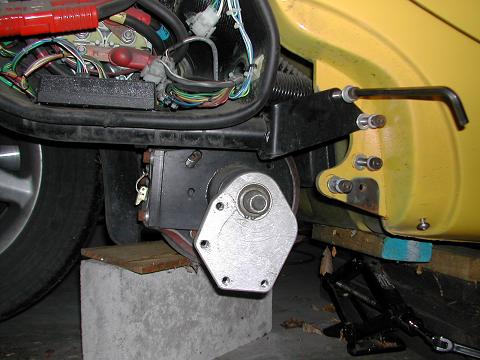
|
A view of the door-side of the Sparrow.
-
The rear wheel of the Sparrow has been jacked up, and a cinder block has been slid under the motor, and then the Sparrow was jacked back down to let the motor just touch the cinder block.
-
The motor mount has been unbolted from the body on the right side. There are locking nuts on the back side of the four bolts that have to be removed before the bolts can be losened. The left side motor mount is still attached.
-
I removed the skirt from the far side, and pushed the rear wheel toward the left side a few inches to expose the motor mount. The ball joint mounting of the motor allow this to be done without bending anything.
|
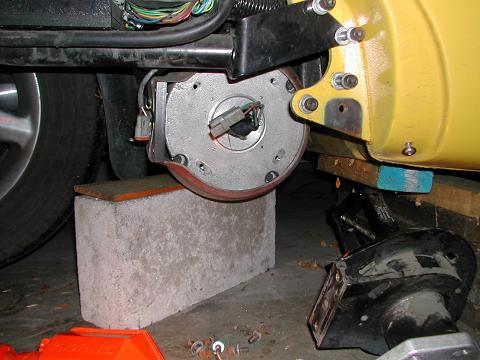
|
In this picture the motor mount has been removed. The aluminum end of the motor has been exposed. The red ring around the motor is the fiberglass cover that allows air to flow from the trunk.
|
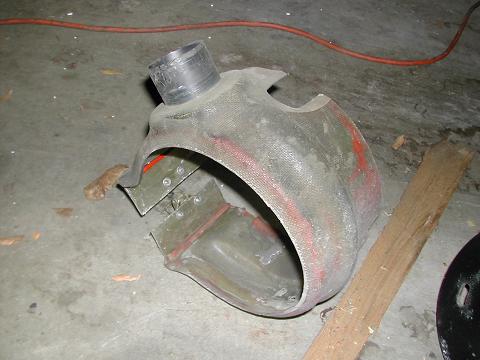
|
This is a picture of the fiberglass motor cover. It covers the air vents on brush end of the motor and forms an air channel where air can flow in from a tube that connects to the trunk. The air holes on the other end of the motor are covered with aluminum tape. Given that the motor is pretty well sealed, except for the tube, I doubt the air flows much at all.
The orange-red lines are the glue that was holding the motor cover on. The glue seems to be a silicone based glue/sealant. There is also a little latch that holds the motor cover tight around the motor.
|
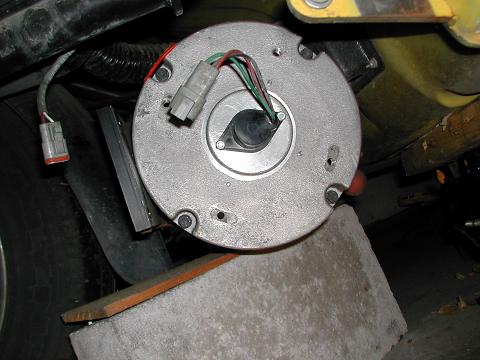
|
The motor, without its cover.
|
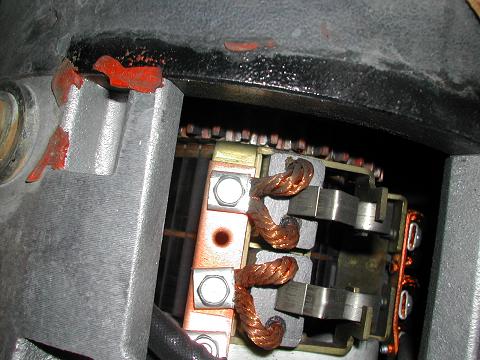
|
This is a picture of the brushes. Using a mirror I checked that they are all there, and all wearing evenly. It looks like they could wear another half an inch before the spring stops applying any pressure. If it took 15K miles to wear away a tenth of an inch, the brushes might be good for another 75K miles.
|




